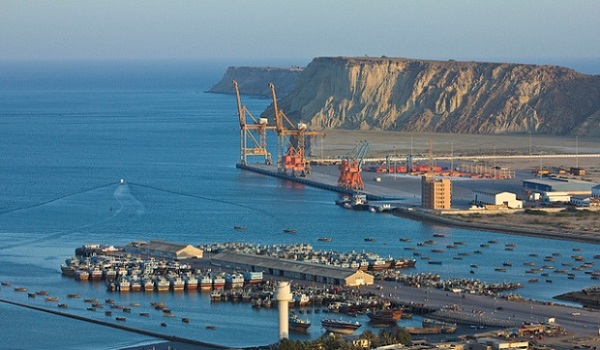
Picture Courtesy : zameen.com
In an article, titled “Gwadar: Emerging Port City or Chinese Colony?” writers Logan Pauley and Hamza Shad – citing examples of various media reports – have analysed how debt-ridden Pakistan is overlooking China’s keen interest for the Gwadar port, where Beijing apparently seeks to a plant a seed that foments long-term influence and ownership.
The Port-Park-City (PPC) model that China is pursuing in Pakistan’s Gwadar, as a part of the USD 62 billion China-Pakistan Economic Corridor (CPEC), might possess “undesirable consequences” for Islamabad and might end up being a “state within a state.”
“Gaining control of Gwadar affords China an opportunity to connect its land-based transport routes through Islamabad all the way to western China, as well as to construct a crude oil pipeline spanning that corridor. Port control in Gwadar also aids China in stringing together maritime ports, ‘pearls,’ along the Indian Ocean back to Hainan,” the article states.
The development of a port, apparently, will be followed by the construction of a majority Chinese-funded industrial park, which is then intended to lead to the establishment of a proxy Chinese city in Pakistan.
The China Pak Investment Corporation (CPIC) has already obtained approval for joint construction projects that will see the establishment of the international port city in Gwadar, including the Gwadar Financial District, an airport, and a USD 265 million luxury golf resort, among many other promises.
It was recently reported that China is planning to settle “hundreds of thousands of its citizens in Gwadar.” However, this went almost unnoticed in Pakistan.
Gwadar is located in Balochistan- Pakistan’s least populated province.
The writers have highlighted a 2016 report, which appeared in The Nation, stating that Baloch natives may be “outnumbered by Chinese expats in the province by 2048,”
Pauley and Shad further gave an example of China’s PPC model in Malaysia, popularly known as the Forest City.
“This development project has ‘room for 700,000 residents being built across a string of man-made islands just off the coast of Malaysia’ and is marketed as a way for Chinese to live in China- while actually inside a different country,” the article mentioned.
Forest City is located in Malaysia’s Iskandar special economic corridor, a region that was launched by the host country’s government but with Foreign Direct Investment from China and other international stakeholders.
The newly-elected Pakistan Prime Minister Imran Khan has raised concern over his country’s over-reliance on foreign debt. His government seems to be thinking more carefully about the CPEC projects than the previous administration.
“The PPC model currently being executed in Malaysia and Pakistan is reminiscent of the first wave of European colonialism, during which European countries established small trading posts on the coasts of Asian and African countries. If large numbers of Chinese nationals do indeed settle Gwadar, it could have troubling demographic consequences,” the article further read.
Pauley and Shad concluded their report by alerting Pakistan on its “delicate situation given the interconnectivity of economic and political ties in the China-Pakistan bilateral relationship.”
“Islamabad must understand the risks associated with the PPC model in Gwadar for both its economy and domestic security. Pakistan should be particularly careful that it does not allow the promising city to become an example of a Chinese imperium in imperio, or ‘state within a state’. Controlling infrastructure projects is one thing; resettling sizable numbers of people as well is a whole other game,” the writers said.


















